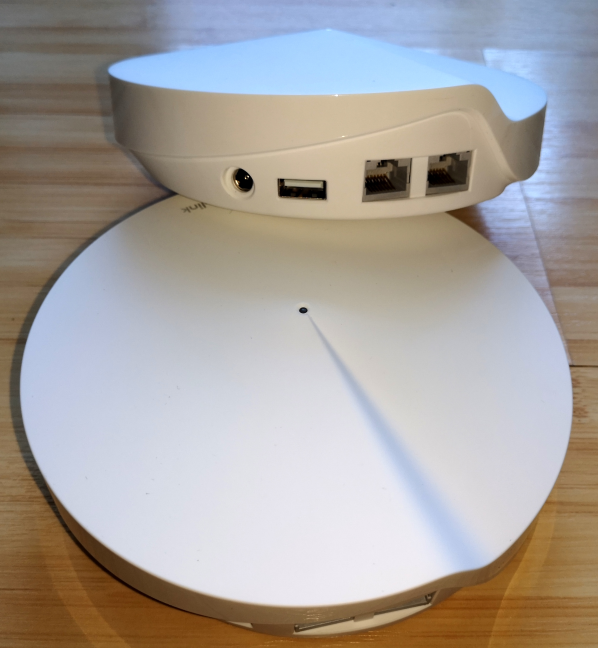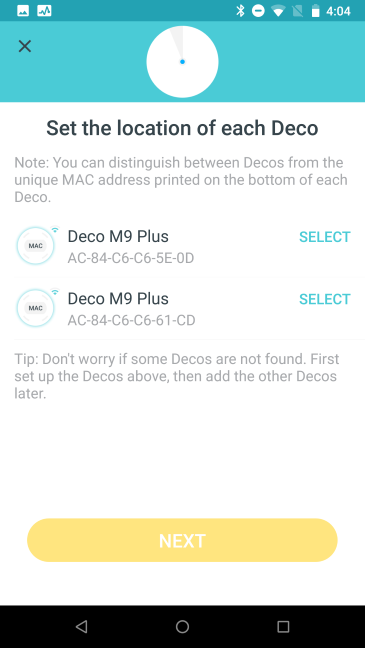
TP-Link makes interesting mesh WiFi systems that provide a balance between price, performance, and features. This time we are testing their most expensive mesh WiFi system to date: TP-Link Deco M9 Plus. It has modern hardware, and it features integration with smart home devices like smart bulbs, smart plugs, sensors, thermostats, and so on, including those made by brands other than TP-Link. If this has aspect alone has stirred your attention, read this review and see what you get from TP-Link Deco M9 Plus:
TP-Link Deco M9 Plus: Who is it good for?
This whole-home mesh WiFi system is a suitable choice for:
- Smart homes with diverse IoT devices that users want to manage from one mobile app
- Users who appreciate a pleasant design, and need discreet networking equipment that does not get in the way
- People who want to remote control their mesh WiFi system from a mobile app
- Secure smart homes with built-in anti-malware protection and intrusion prevention systems
- Owners of Alexa powered devices who want to voice control their home network
- Parents who desire excellent parental controls to protect their children online
- Flexible home networks where you often add or remove devices or coverage areas
Pros and cons
TP-Link Deco M9 Plus has the following positives:
- Excellent speed, especially on the 5 GHz band
- Can be integrated with smart-home devices like smart bulbs, smart plugs, sensors, thermostats, and more
- Well thought out design that combines simplicity and elegance
- Easy to set up through the TP-Link Deco mobile app
- Top-notch antivirus protection
- Useful parental controls that are easy to use
- It is integrated with Amazon Alexa and IFTTT (If This Then That)
- Competitive pricing for its feature set
There are a few downsides too:
- The USB port cannot be used, yet. TP-Link should unblock it in future firmware versions
- After three years of use, you have to pay for the built-in antivirus
- The variability of the 2.4 GHz wireless band is worth improving a bit, especially when dealing with walls and doors
- It does not offer a web-based interface for administration
Verdict
TP-Link Deco M9 Plus is a promising product that delivers plenty of performance for your entire home. It has modern hardware and a dedicated WiFi backhaul that can handle many WiFi network clients at once. It also offers something that you do not often see in the market of mesh WiFi systems: integration with smart home devices from other brands, not only those created by TP-Link. While here are a few quirks and small issues that need to be ironed out in future firmware updates, TP-Link Deco M9 Plus is a top performing mesh WiFi system, that is a good choice for people that are interested in creating a speedy wireless network, in their whole home.
Unboxing the TP-Link Deco M9 Plus mesh WiFi system
The packaging used for Deco M9 Plus is beautiful. It uses calming white and cyan colors. On the top cover you see a picture with the devices that make up the system you just bought, and a list of its essential characteristics.
TP-Link Deco M9 Plus is sold in three variants: with three stations, two stations or just one. We received for testing the variant with three stations. The unboxing is pleasant and worthy of a premium product. Everything is packaged nicely so that it looks good and it is also easy to unbox. In the packaging you find the Deco M9 Plus stations, their power adapters, one Ethernet cable, the Quick Installation Guide, licensing and warranty information.
Both the packaging and the unboxing experience offered by TP-Link Deco M9 Plus are pleasant. Inside the packaging, you find everything you need to get started.
Hardware specifications and design
TP-Link Deco M9 Plus is a three-band mesh WiFi system, with a total theoretical maximum bandwidth split as follows: 867 Mbps for each 5 GHz wireless frequency (there are two of them in total), and 400 Mbps for the 2.4 GHz frequency. According to TP-Link one of the two 5 GHz bands is used as a WiFi backhaul, is reserved for transferring data only through the Deco M9 Plus stations, for improved wireless speed and coverage. This backhaul is also dynamic, in the sense that it can use a portion of the two remaining wireless frequencies if the data transfer load is high. TP-Link Deco M9 Plus offers support for the 802.11ac Wave 2 wireless standard (Wi-Fi 5), 2x2 MU-MIMO transfers, as well as older WiFi standards like 802.11b/g/n.
Each TP-Link Deco M9 Plus station has a quad-core Qualcomm IPQ4019 processor, running at 717 MHz, 512 MB of RAM, and 4 GB of flash storage space for the firmware. Inside each Deco M9 Plus, there are six wireless antennas, one for Bluetooth 4.2, and one for ZigBee HA1.2 - a protocol that is used by some smart IoT (Internet of Things) devices to communicate and transmit data. Speaking of smart devices, one unique feature of TP-Link Deco M9 Plus is its ability to work with smart-home devices like smart bulbs, smart plugs, sensors, door locks, and thermostats. When you connect such devices to the network, Deco M9 Plus allows you to control smart home devices from the Deco app, with no additional hub required. You can see the list of compatible devices, here: Deco M9 Plus Smart Home Device Compatible List.
On each TP-Link Deco M9 Plus, there are two Ethernet ports at 1 Gbps, the Power jack, and a USB 2.0 port which, unfortunately, cannot be used until TP-Link unlocks the port through firmware updates.
On the bottom of each Deco M9 Plus, there is a Reset jack, four feet for placing it on flat surfaces, and the ventilation grids. Unfortunately, there are no holes for wall mounting.
TP-Link Deco M9 Plus looks discreet and elegant. You can place your stations in a modern living room without making it ugly. Also, their size makes it easy to hide them out of sight, when you need to. Each Deco M9 Plus has a diameter of 5.6 inches or 144 mm, and a height of 1.81 inches or 46 mm.
If you would like to read all the official specifications of this product, go to this page: TP-Link Deco M9 Plus Specifications.
Setting up and using the TP-Link Deco M9 Plus
The setup of the Deco M9 Plus mesh system is done using the TP-Link Deco mobile app for Android and iOS. You also need a TP-Link Cloud account, which you can create from the app or on your computer. One downside is the lack of two-factor authentication, to increase the security of your account. We hope that TP-Link is going to add this security feature in the future. After you log in with your TP-Link Cloud account, you can start the setup process. The Deco setup wizard is easy to use, and it starts with choosing the model that you own.
You then go through the necessary configuration steps, and you are asked to set the following elements: the location of the Deco M9 Plus that you are setting up, the details of your internet connection, and the name and the password for the wireless network that it is going to be broadcast. Once the first Deco M9 Plus is set up, you can add the remaining devices. All you have to do is choose where they are placed. The app helps them copy the settings you have made for the first Deco. One thing to keep in mind is that the discovery of Deco M9 Plus stations is made using Bluetooth. Therefore, you need to keep Bluetooth turned on on your smartphone or tablet. Otherwise, the setup process does not work.
When you are done setting up the TP-Link Deco M9 Plus mesh system, the app automatically checks for firmware updates and, if any are found, it asks you to download and install the latest version. You should perform the update, as newer versions of firmware improve performance, fix stability problems and security vulnerabilities. The firmware updates take a few minutes and involve a restart of all the Deco M9 Plus stations.
Then, you can use the TP-Link Deco mobile app to view and configure all settings. On the main screen of the app, you see the list of devices that are connected to the network. You also have a couple of shortcuts and menus. With the app, you can set mostly basic stuff, like the name and password for the WiFi, test the internet speed, set up a blacklist of devices, update the firmware, enable or disable the WPS, and set a few advanced features.
There are not many advanced settings available, and everything can be set up with ease. You can set features like port forwarding, enabling the IPv6 support, DDNS, the LED control, and the notifications you receive. The security tools that are bundled with TP-Link Deco M9 Plus can be configured from the Homecare section. More details about them can be found on the second page of this review.
All the settings are nicely explained so you should have no issues in setting up the TP-Link Deco M9 Plus. At the beginning of each month, the TP-Link Deco mobile app offers a report. It includes useful statistics like the devices from your network with the most time spent online, the top internet speed achieved in your network, the number of new devices connected to the network, the malicious attacks blocked, and the internet history of your child if the Parental Controls are set up.
One downside that is not going to be appreciated by advanced users is the fact that TP-Link does not offer access to a web administration user interface, as is the case with mesh systems from other brands. This means that you are stuck with the basic settings offered by the mobile app.
We connected about twenty devices to the network: desktop PCs, laptops, tablets, several smartphones, two smart plugs, one smart bulb, an Xbox One console, and a wireless printer. All of them connected to the network without problems. We were also able to share content through the network.
When transferring data through the network, we looked at the variability of network transfers. On the 5 GHz wireless band, transfers were fast and stable, in most cases. There was some variability, in a few rooms, but nothing outside of our comfort zone.
However, on the 2.4 GHz wireless band, the variability can increase by quite a lot, when the Deco M9 Plus has to deal with walls and doors. Look at the wireless network transfer below, made in a room separated by two walls from the main Deco M9 Plus station. As you can see, there are a few speed drops that are worth investigating and improving. The variability is not dramatic by any means, but it is still noticeable on the 2.4 GHz band, and a future firmware update could improve the user experience in this regard.
We are pleased with TP-Link Deco M9 Plus and what it has to offer. We enjoyed how easy it was to set up, how well it worked, how it looks and the features that it offers. There are a few issues that may raise some eyebrows, like the fact that you cannot yet use the USB port on the Deco M9 Plus, and that you need to pay for the antivirus service after three years of use. Also, it is not clear how much this service is going to cost after its expiration date.
If you want to know more about the real-world performance offered by TP-Link Deco M9 Plus, including comparisons with competing mesh WiFi systems, go to the next page of this review.


 15.03.2019
15.03.2019 













